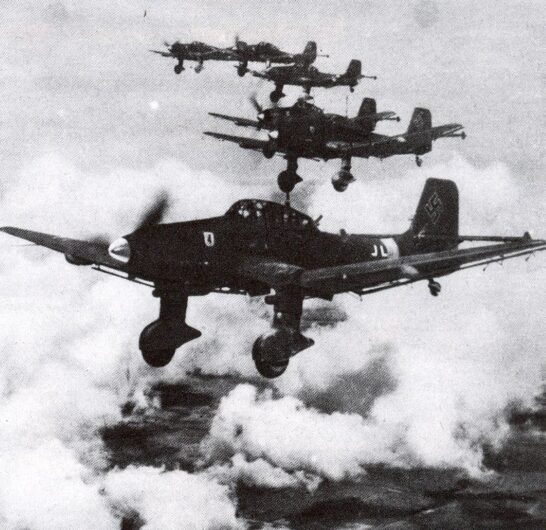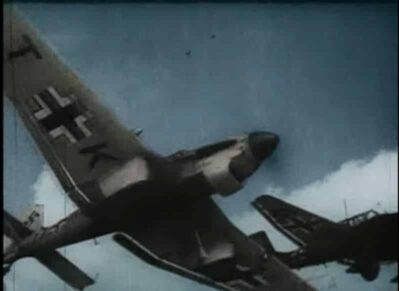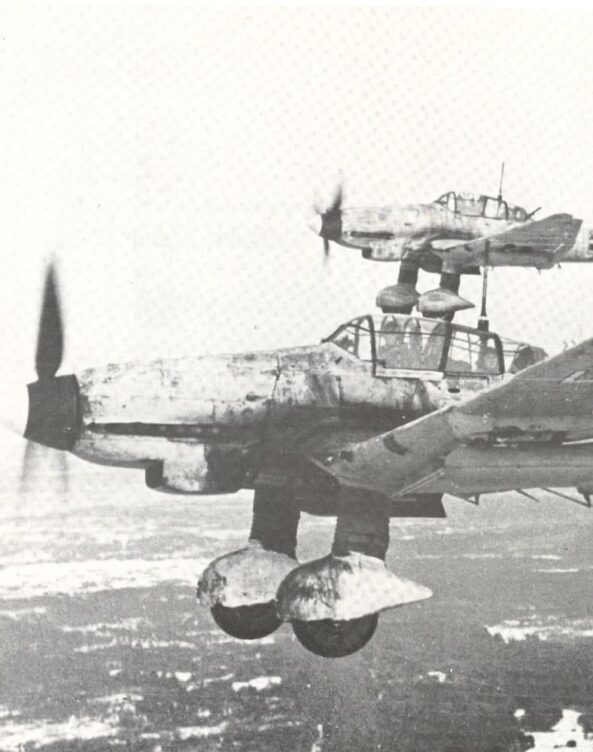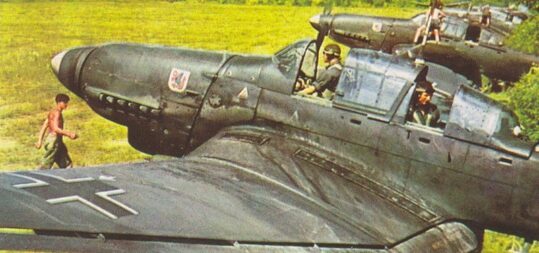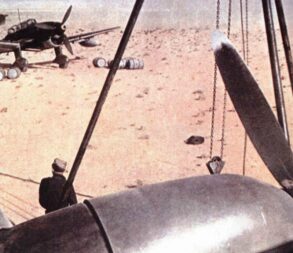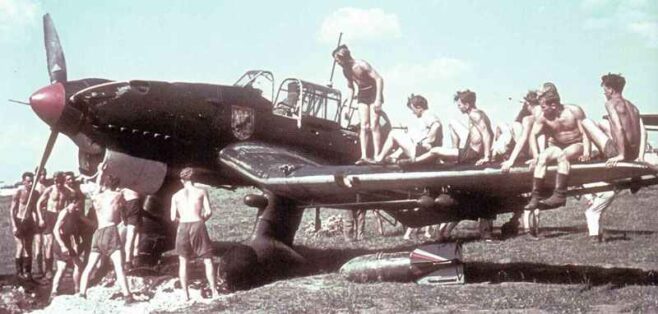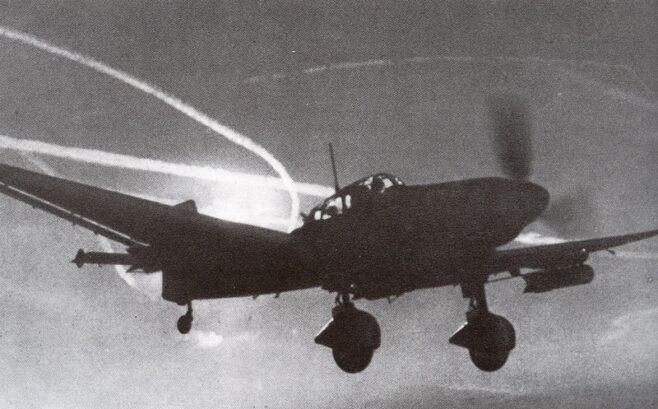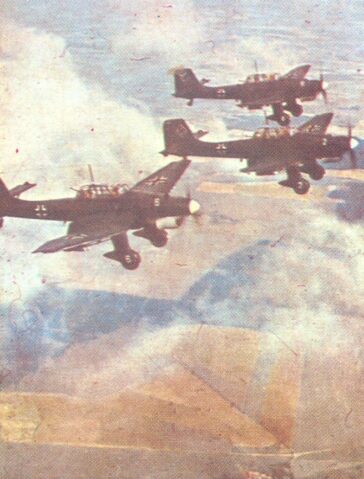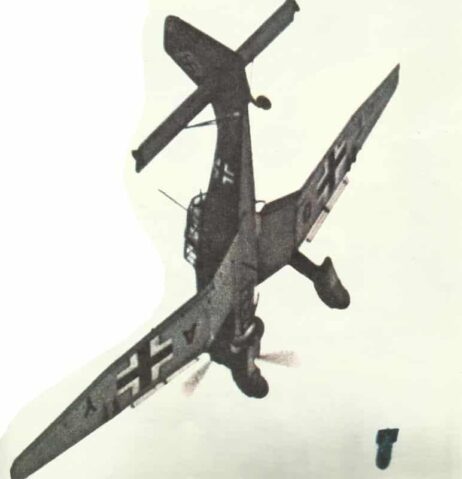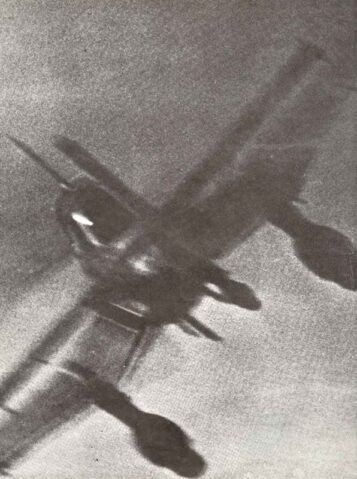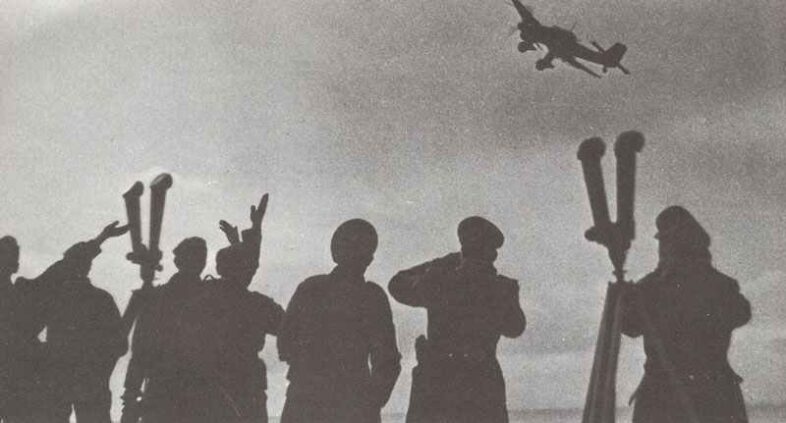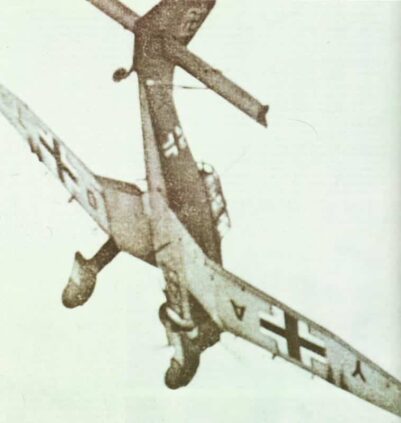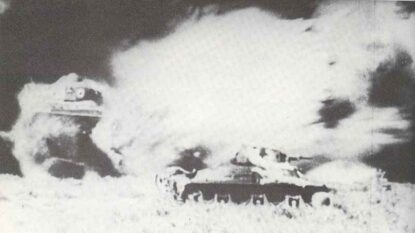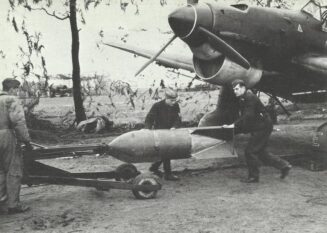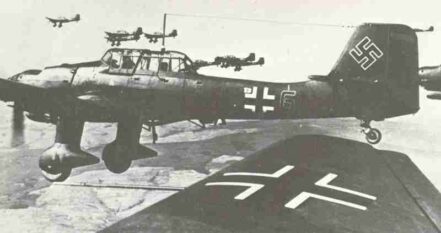Junkers Ju 87 dive-bomber.
Service performance and comparison to other dive-bombers, many pictures and animated 3D model of a Ju 87B in the Western Desert.
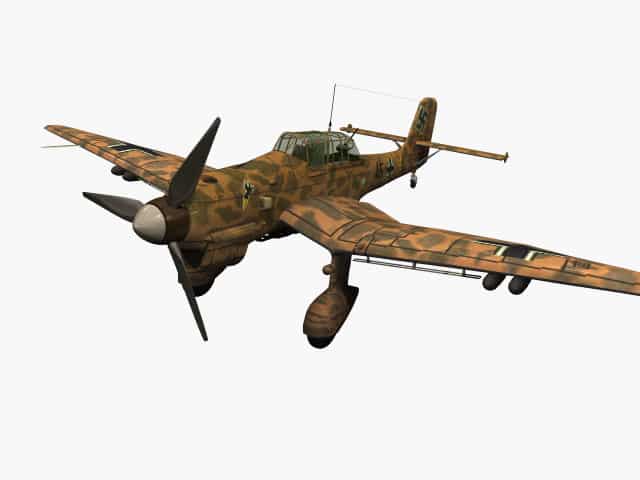

Service performance of Ju 87
Table of Contents
The Junkers Ju 87, commonly known as Stuka (short of ‘Sturzkampfbomber’, the German word for dive-bomber), is one of the classic military aircraft of aviation history.
The name Stuka, together with the ‘Panzer’ (tank) is equal with the modern vision of the ‘Blitzkrieg’ (Lightning War). This was no coincidence, because the two were very close together as a combined weapon team, the Stuka’s being the ‘flying artillery’, which could crush any hostile base, defense position or troop concentration that could have hindered the advance of the ‘Panzertruppe’ (armored forces).
In this respect, the Ju 87 was always a ground combat aircraft. It was a tactical bomber, who supported the ground groups of the Wehrmacht and not a strategic bomber. The successes of the Stuka also extended to a multitude of other targets, including ships, airfields, railway stations, bridges, and other strategic objectives, which were, however, only secondary to the main task of working together with the German ground units in the main direction of the advance.
Under the cover of own air superiority, the Ju 87 was undoubtedly the deadliest and most morally effective ground combat aircraft of all the armed forces during the first half of WW2.
The main reason for this was, on the one hand, the accuracy with which an experienced Stuka pilot could deliver a 500 (1,100lb) kg bomb at the target, as well as the considerable problem for anti-aircraft gunners who were attempting to shoot an airplane at a deep horizontal angle of 5°.
It is a remarkable fact that no other aircraft deployed during the WW2 could deliver large or small bombs on a target with such regular accuracy. The Stuka pilots were so capable that they were often assigned by the tactical air-force connecting groups in the army units by radio to destroy some selected buildings, bunkers, artillery positions or even digged in enemy tanks.
It was not uncommon for their dive-bombing attacks to be flown only a few hundred yards from their own advancing ground units.
The Ju 87 almost certainly added more damage for any lost plane during WW2 than any other aircraft on the Axis or Allied side. A remarkable fact is that the Stuka has destroyed more ships than any other aircraft in the military history.
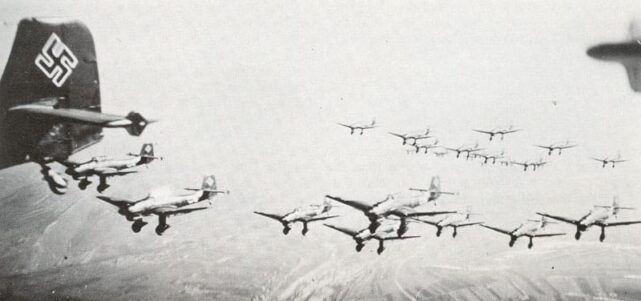
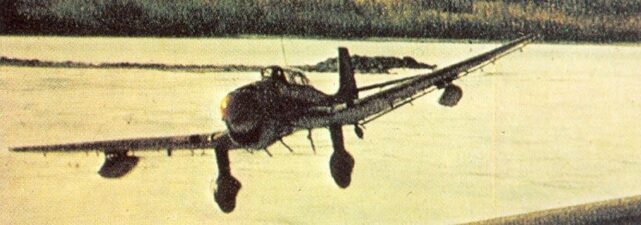
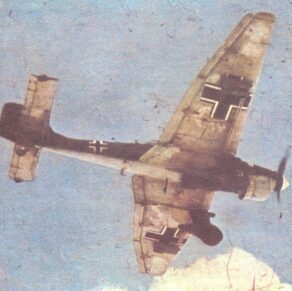
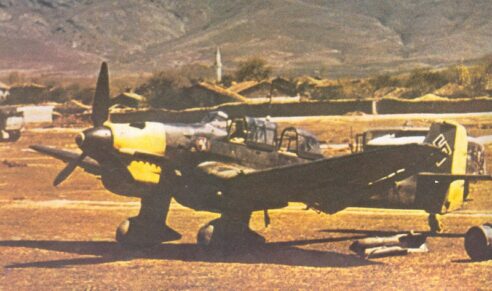
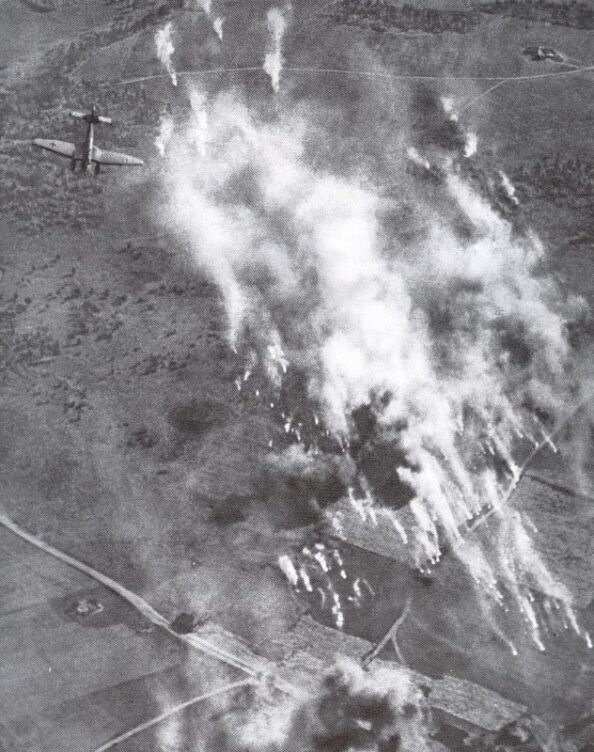
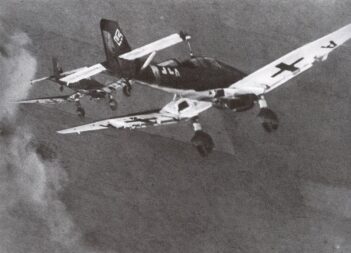
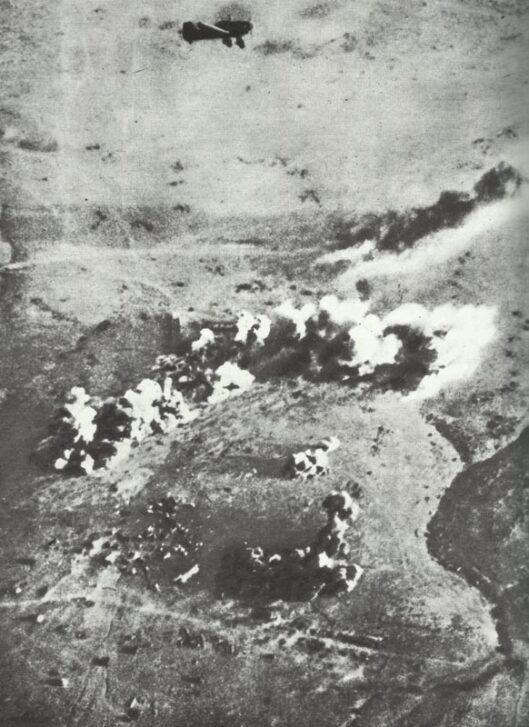
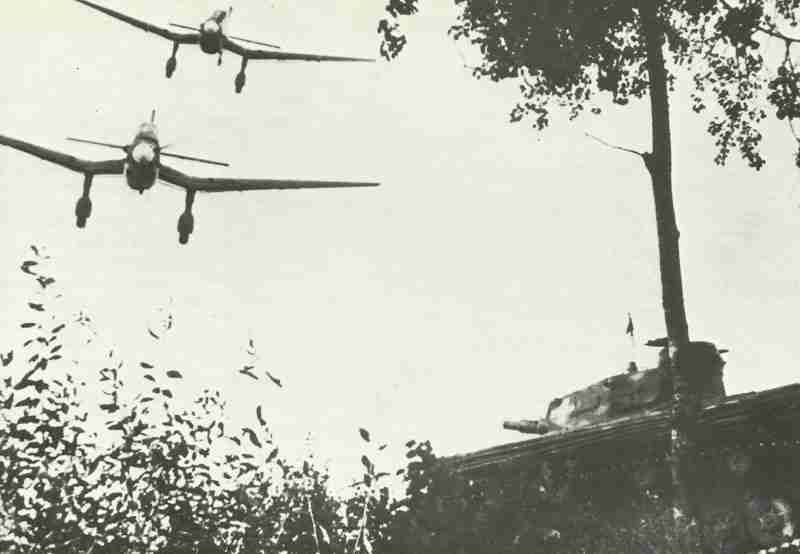
The Ju 87 was so deadly accurate, because their construction of the airframe and its stability allowed an extreme dive bombing tactics. In addition, the design had an effective aiming mechanism and an automatic system for recovering from the dive.
When approaching the target, the pilot set the bomb release height in a device that automatically triggers the bombs and pulls the aircraft out of the dive into the vertical.
The large bomb under the fuselage was automatically swung out with the suspension to avoid contact with the propeller in the almost vertical fall. The pilot then throttled the engine and extended the dive brakes, which were at the front edges of the wings, which automatically activated the trim tabs on the elevator and the aircraft entered the dive.
Red lines on the side windows helped the pilot set the right dive angle, and he could concentrate on keeping the target in his sight.
Upon reaching the pre-selected altitude, the bomb was released and an automatic device to pull out of the dive adjusted the trim tabs and the nose of the aircraft lifted over the horizon. The pilot then took control again after the dive, opened the engine throttling and closed the dive brakes.
The strength of the airframe and the wings of the Ju 87 usually enabled forces of more than 6g to be pulled out of the dive.
Animated 3D model of Ju 87B Stuka (Western Desert)
Comparison to other aircraft
The only other airplanes used during WW2 that may have reached the bombing accuracy of the Ju 87 are the Japanese Aichi D3A (Val) and the American Douglas SBD Dauntless dive bomber.
The later Curtiss SB2C Helldiver used in the war from the end of 1943 was designed for a higher horizontal speed, and although it was also used as a dive-bomber, its design was similar to that of a multi-purpose naval aircraft.
Both the Val and the Dauntless were designed around the same time as the Stuka in the mid-1930s, but were primarily intended for attack on enemy ships. In this role, both were successful, but they could not operate like the Stuka effectively under strong enemy air superiority.
However, both the Val and the Dauntless were quite ineffective if they were to be used in some way for ground attacks. They could not hit smaller ground targets effectively, especially under enemy air defense fire. They could not fly the dive-attack in such a strong angle as the Ju 87.
Neither the Val nor the Dauntless had the strength of the inverted ‘gull’ wing to pull out of the almost vertical dive at low altitudes and at high speed and their dive aiming and automatic equipment for pull out of the dive was not so advanced.





